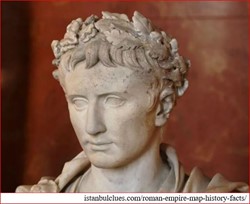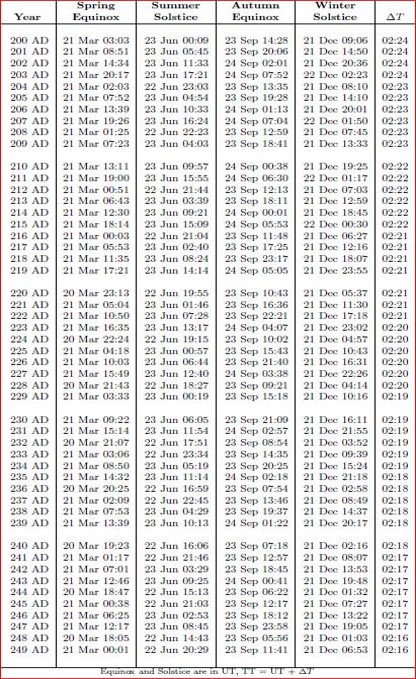
Emperor Augustus was born on 23 September 63BC, as it is known today, under the name Gaius Octavius. He was a member of the Roman elite, the son of Julius Caesar’s niece. Caesar adopted Octavian because Octavian’s father died early, and the young man was very talented.
Augustus’ parents were aware that the Roman calendar was not only wrong but also confused. Under these circumstances, it is logical that his birthday was not tied to the calendar day. The day of his birth happened to coincide with the astronomically important day of the autumnal equinox (AEQ). This day was also considered to have symbolic astrological significance, so the day of the AEQ was noted as his birthday. Augustus had just turned 17 when his stepfather, Caesar, introduced his calendar reform.
After he came to power in 27 BC, Augustus celebrated his birthday as an official holiday on 23 and 24 September (biduum, a period of two days). I assumed that it could be related to the AEQ day.
Let us first examine which calendar day the AEQ fell in the reign of Emperor Augustus, according to the AD time accepted today.
Repeating what we presented earlier: The most widely held view among calendar scholars today about Augustus’ restoration of the calendar is that it began after 9BC. 9BC was the last leap year erroneously used (every 3 years instead of 4). The result of the calendar restoration was valid from AD8. From this point on, the Julian calendar was fully restored, i.e., it functioned according to the original plan, in summary, without omission or insertion of days.
The table below shows that from the beginning of the calendar reform and for many years afterwards, the AEQ would have fallen on 25 September every year if the leap year cycle had not been broken from 4 to 3 years.

Table 7. (AEQ (LMT) values are the author’s calculations based on this source.)
In Table 7, grey highlighting indicates the 4-year leap year cycle and yellow highlights the 3-year leap year cycle. The final year of calendar reset AD8, a 4-year cycle year, is marked by turquoise highlighting. Green and blue highlighting indicate which of the 3 leap years Emperor Augustus could have ignored, depending on whether they were cancelled in every 3rd or 4th year of the restoration period.
It can also be seen in the table that the date of the AEQ would have changed very rapidly between 22 and 25 September during the years of the restoration.
In my opinion, Augustus could hardly have accepted that his birthday and the day of the AEQ should not coincide in the calendar and even that the day of the AEQ should permanently revert to the previous date of 25 September.
In the next post, Horologium Augusti, we will see that the period of the supposed calendar restoration was important to Augustus for other reasons, too.
Let’s see how the date of AEQ day evolved 220 years later:

Table 8. shows that the AEQ day moves roughly in line with the VEQ day in the calendar. This is because the astronomical time difference between the AEQ day and the following year’s VEQ day is approximately 178.84 days, and the time difference between the VEQ day and the AEQ day of the same year is about 186.4 days (178.84+186.4=365.24). The calendar “tries” to follow this strictly, although accuracy is virtually impossible because of the fractional days. It is somewhat inaccurately told that if VEQ falls on 21 March, then AEQ falls on 23 September. The day of AEQ fell on 23 and 24 September every 2 years, alternately, from AD184 onwards. Later, from AD216, for 100 years, it fell predominantly on 23 September.
As already described, Emperor Augustus celebrated his birthday on 23-24 September (biduum). Presumably, this was because in the starting year of the assumed calendar reset, AD212 = 212CE, the AEQ day still alternated between these two days, as shown in Table 8.
In summary:
We pointed out that Emperor Augustus did not tie his birthday to a specific calendar date but to the day of the AEQ. During his reign, the day of AEQ fell more and more frequently (first dominantly, and later for decades, precisely) on 23 September. This fact was obviously calculated in advance by Augustus’ astronomers and reported to the emperor. So, Emperor Augustus must have placed his birthday on 23 September because his astronomers told him that the AEQ would occur on that day for many years of his life.
Comparison: Astronomical data for AD8 in Rome. VEQ: 22 March AD8, 15:34, LMT (Local Mean Time, Rome), AEQ: 25 September AD8, LMT 1:30 Astronomical data for AD228 = 228CE in Rome. VEQ: 28 March 228CE, 22:33 LMT (due to the leap back leap year, not 21 March but 20 March) AEQ: 23 September 228CE, 10:11 LMT Both VEQ and AEQ are very much in their right place! According to another astronomical programme (Time and date): in 228CE in Rome VEQ fell on 21 March, 0:44 and AEQ on 23 September,12:23.
From the above, the calendar restoration by Emperor Augustus probably did not happen because 220 years later, the calendar restoration was not necessary, as we have assumed.
Comment: In my opinion, Emperor Augustus would have “used” the date of AEQ a priori (thinking in the long term) by setting 25 September from AD8 onwards and 23 September from 228CE onwards as his AEQ & birth date. Whether or not he had to restore the Julian calendar before those years. I think it should be re-examined by scientific methods whether the two much later recollections of the restoration of the calendar by Emperor Augustus are misinterpretations or forgeries. If Emperor Augustus did indeed live 220 years later, then the leap year error theory could be forgotten, and the subsequent calendar restoration would become unnecessary. Happened as happened, the Julian calendar from at least 228CE onwards functioned correctly according to its own rules until the calendar reform of Pope Gregory XIII (AD1582), as told already.
